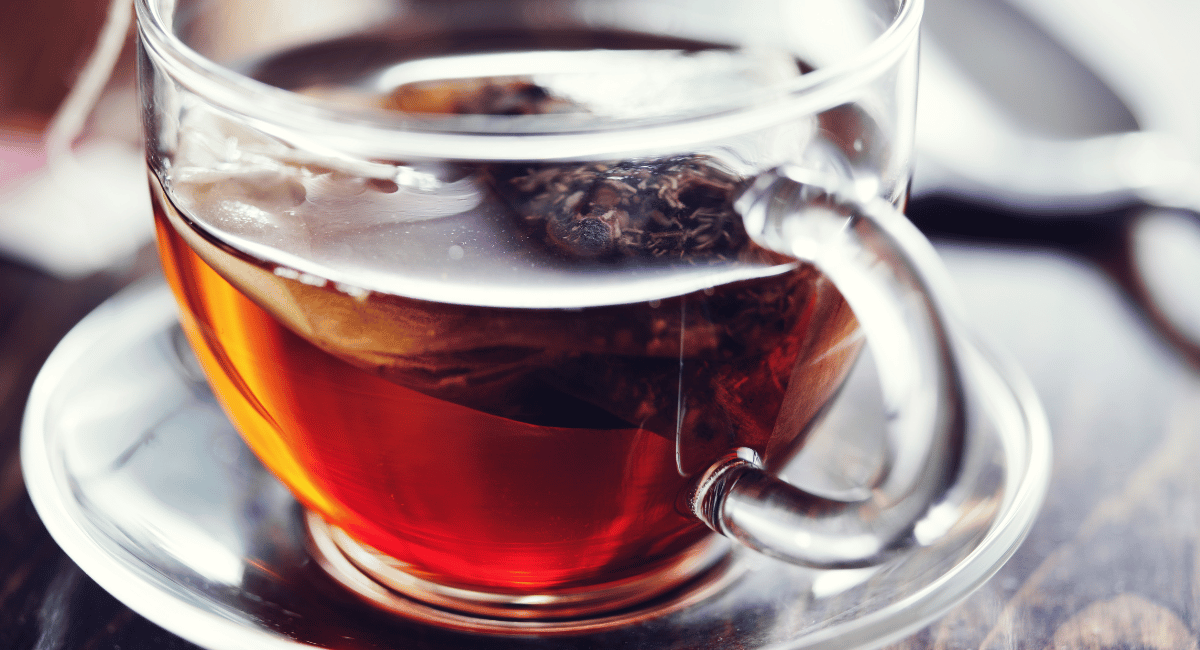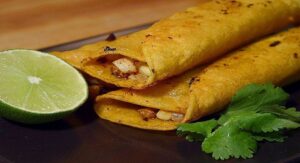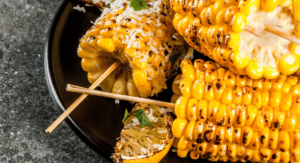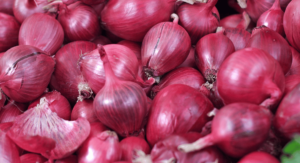Steeping involves soaking or infusing ingredients in a liquid (usually hot or warm) to extract flavors, colors, or aromas. This process allows the liquid to absorb the essence of the ingredients.
Differences from Other Culinary Techniques:
- Steeping vs. Boiling/Simmering: While boiling or simmering involves cooking ingredients in a liquid at high or low heat, respectively, steeping doesn’t involve prolonged cooking. It focuses on extracting flavors through soaking rather than heat application.
- Steeping vs. Marinating: Steeping often involves shorter soaking periods and is typically done with solid ingredients in a liquid, while marinating usually involves longer periods and incorporates various seasonings into the liquid to impart flavors to meats, vegetables, or other foods.
Cultural and Culinary Significance:
Importance of Steeping in Mexican Culinary Traditions:
- Flavor Extraction: Steeping allows ingredients like dried chilies, herbs, spices, or other aromatics to impart their unique flavors and aromas into the liquid without altering the ingredients’ natural state.
- Authentic Flavor Profiles: It contributes to the distinctive taste profiles of Mexican dishes by extracting the essence of key ingredients, creating authentic flavors and aromas integral to traditional recipes.
Contribution to Flavors, Aromas, and Authenticity:
- Enhanced Aromatics: Steeping enables the extraction of essential oils and aromatics from ingredients like spices, herbs, or dried chilies, enhancing the overall aroma of Mexican dishes.
- Complex Flavors: It contributes to the layering of flavors, allowing the liquid base of dishes like sauces, stocks, or beverages to carry a depth of taste derived from steeped ingredients.
Steeping plays a crucial role in Mexican culinary traditions by allowing the extraction of flavors, aromas, and essential elements from various ingredients, contributing significantly to the authentic taste and character of Mexican cuisine.
Steeping in Traditional Mexican Culinary Practices:
Meaning of Steeping:
- Steeping involves soaking or infusing ingredients in a liquid (usually hot or warm) to extract flavors, colors, or aromas. This process allows the liquid to absorb the essence of the ingredients.
Differences from Other Culinary Techniques:
- Steeping vs. Boiling/Simmering: While boiling or simmering involves cooking ingredients in a liquid at high or low heat, respectively, steeping doesn’t involve prolonged cooking. It focuses on extracting flavors through soaking rather than heat application.
- Steeping vs. Marinating: Steeping often involves shorter soaking periods and is typically done with solid ingredients in a liquid, while marinating usually involves longer periods and incorporates various seasonings into the liquid to impart flavors to meats, vegetables, or other foods.
Cultural and Culinary Significance:
Importance of Steeping in Mexican Culinary Traditions:
- Flavor Extraction: Steeping allows ingredients like dried chilies, herbs, spices, or other aromatics to impart their unique flavors and aromas into the liquid without altering the ingredients’ natural state.
- Authentic Flavor Profiles: It contributes to the distinctive taste profiles of Mexican dishes by extracting the essence of key ingredients, creating authentic flavors and aromas integral to traditional recipes.
Contribution to Flavors, Aromas, and Authenticity:
- Enhanced Aromatics: Steeping enables the extraction of essential oils and aromatics from ingredients like spices, herbs, or dried chilies, enhancing the overall aroma of Mexican dishes.
- Complex Flavors: It contributes to the layering of flavors, allowing the liquid base of dishes like sauces, stocks, or beverages to carry a depth of taste derived from steeped ingredients.
Steeping plays a crucial role in Mexican culinary traditions by allowing the extraction of flavors, aromas, and essential elements from various ingredients, contributing significantly to the authentic taste and character of Mexican cuisine.
Vessels and Steeping Considerations in Mexican Cooking:
Preferred Vessels:
- Clay Pots (Ollas de Barro): Traditional clay pots are commonly used for steeping in Mexican cuisine. These pots offer even heat distribution and are suitable for both hot and cold infusions.
- Glass or Ceramic Containers: For herbal infusions or teas, glass jars or ceramic containers are used for steeping due to their inert properties, which won’t affect the flavors.
Steeping Duration and Temperature:
- Duration: Steeping durations vary based on the ingredients and desired intensity of flavor. Dried chilies might require 15-30 minutes, while herbal infusions could steep for longer periods, sometimes hours.
- Temperature: For hot infusions, like steeping dried chilies for sauces, a moderate heat level is often used. Cold infusions, such as herbal teas, are steeped at room temperature or in the refrigerator for a longer time.
Flavor Infusion and Enhancements:
Extraction of Flavors and Essences:
- Heat and Time: Steeping allows the transfer of flavors and essences from ingredients like dried chilies or herbs into the liquid. The heat (if used) facilitates this process by opening up the ingredients and allowing their flavors to infuse.
- Hydration of Ingredients: Steeping hydrates dried chilies, spices, or herbs, softening them and releasing their aromatic compounds, resulting in flavorful infusions for dishes or beverages.
Achieving Desired Flavors:
- Balancing Combinations: Specific ingredient combinations, such as blending various chilies or herbs with spices, contribute to achieving nuanced and complex flavors in steeped liquids.
- Customization: Chefs and cooks often personalize steeping combinations to match regional tastes or individual preferences, creating unique flavor profiles in Mexican dishes.
In Mexican cuisine, flavor extraction and enhancement during steeping involve a balance between duration, temperature, and ingredient combinations. The choice of vessels, steeping durations, temperature considerations, and specific combinations of ingredients all play vital roles in achieving the desired flavors and essences in steeped elements, enriching the taste of various Mexican dishes.
Iconic Mexican Recipes and Steeping Techniques:
Mole Sauce:
Steeping Process:
- Prepare Dried Chilies: Clean, deseed, and lightly toast dried chilies like ancho, guajillo, and pasilla.
- Rehydrate Chilies: Place the toasted chilies in hot water and allow them to steep for 15-30 minutes until softened.
- Blend Ingredients: After steeping, blend the rehydrated chilies with other spices, nuts, seeds, chocolate, and aromatics to create the complex mole sauce base.
- Cooking: Simmer the blended mixture to develop flavors further, allowing it to thicken into the desired consistency.
Jamaica (Hibiscus) Tea:
Steeping Process:
- Prepare Jamaica Flowers: Rinse dried hibiscus flowers (jamaica) to remove any debris.
- Boil Water: Bring water to a boil and then remove it from heat.
- Steep Flowers: Add the rinsed Jamaica flowers to the hot water and let them steep for about 15-20 minutes.
- Strain and Serve: After steeping, strain the liquid to remove the flowers and serve the vibrant, tart-flavored Jamaica tea either hot or cold with sugar or sweeteners if desired.
Regional Variations and Specialties:
Varied Steeping Techniques:
- Oaxaca: Known for its rich mole varieties, steeping techniques in Oaxacan cuisine might involve blending different chilies, spices, and unique regional ingredients like hoja santa or avocado leaves.
- Yucatán: In this region, steeping methods might involve the use of achiote paste (annatto seeds), marinating meats for dishes like cochinita pibil, where annatto seeds are steeped in citrus juice to create a vibrant marinade.
Ingredient Variations:
- Regional Ingredients: Different regions utilize local ingredients in their steeping processes, contributing to the distinctive flavors of the steeped elements in dishes across Mexico.
- Technique Adaptations: While steeping processes might remain similar, regional variations involve adapting steeping techniques to include specific spices, herbs, or chilies prominent in each area, creating diverse flavors in regional dishes.
Steeping techniques in Mexican cuisine vary across regions, with different ingredients and methods employed to create iconic dishes like mole or hibiscus tea. Regional specialties showcase unique styles of steeping, incorporating local ingredients and variations in steeping durations or combinations, contributing to the diverse culinary landscape of Mexico.
Typical Mistakes When Steeping Ingredients for Mexican Dishes:
1. Over-Steeping or Under-Steeping:
- Issue: Allowing ingredients to steep for too long or too short a time can result in a liquid that is either overly intense or lacking in flavor.
- Solution: Monitor steeping times carefully according to the recipe or taste preferences to achieve the desired flavor intensity.
2. Incorrect Water Temperature:
- Issue: Using water that is too hot can cause certain ingredients to become bitter or release unwanted flavors.
- Solution: Use the appropriate temperature as recommended for specific ingredients. For example, cooler temperatures are ideal for delicate herbs or flowers.
3. Inadequate Preparation of Ingredients:
- Issue: Improperly cleaning or handling ingredients before steeping can introduce impurities or affect the final flavor.
- Solution: Ensure thorough cleaning and proper preparation of ingredients by removing stems, seeds, or debris as needed.
Troubleshooting Steeping Issues:
1. If Steeped Liquid Is Too Strong:
- Solution: Dilute the liquid by adding more water or a neutral liquid to reduce the intensity. Adjusting the liquid-to-ingredient ratio can help balance the flavors.
2. If Steeped Liquid Is Too Weak:
- Solution: Steep the ingredients for a longer duration or increase the ingredient-to-liquid ratio to enhance the flavor. Adding more ingredients or increasing steeping time can intensify the flavors.
3. Adjusting Steeping Times or Methods:
- Solution: For stronger flavors, extend the steeping time gradually while tasting periodically until the desired intensity is reached. Conversely, reduce steeping time for lighter flavors.
4. Taste Testing and Monitoring:
- Solution: Taste the steeped liquid periodically during the process to gauge its flavor. Adjust steeping times, temperature, or ingredient quantities accordingly to achieve the desired taste.
By avoiding common mistakes such as over-steeping, using incorrect water temperatures, or inadequate preparation of ingredients, and employing troubleshooting methods like adjusting steeping times or liquid quantities, one can rectify and prevent issues when steeping ingredients for Mexican dishes, ensuring a balanced and flavorful outcome. Regular taste testing during the steeping process is crucial to achieving the desired flavor intensity.





